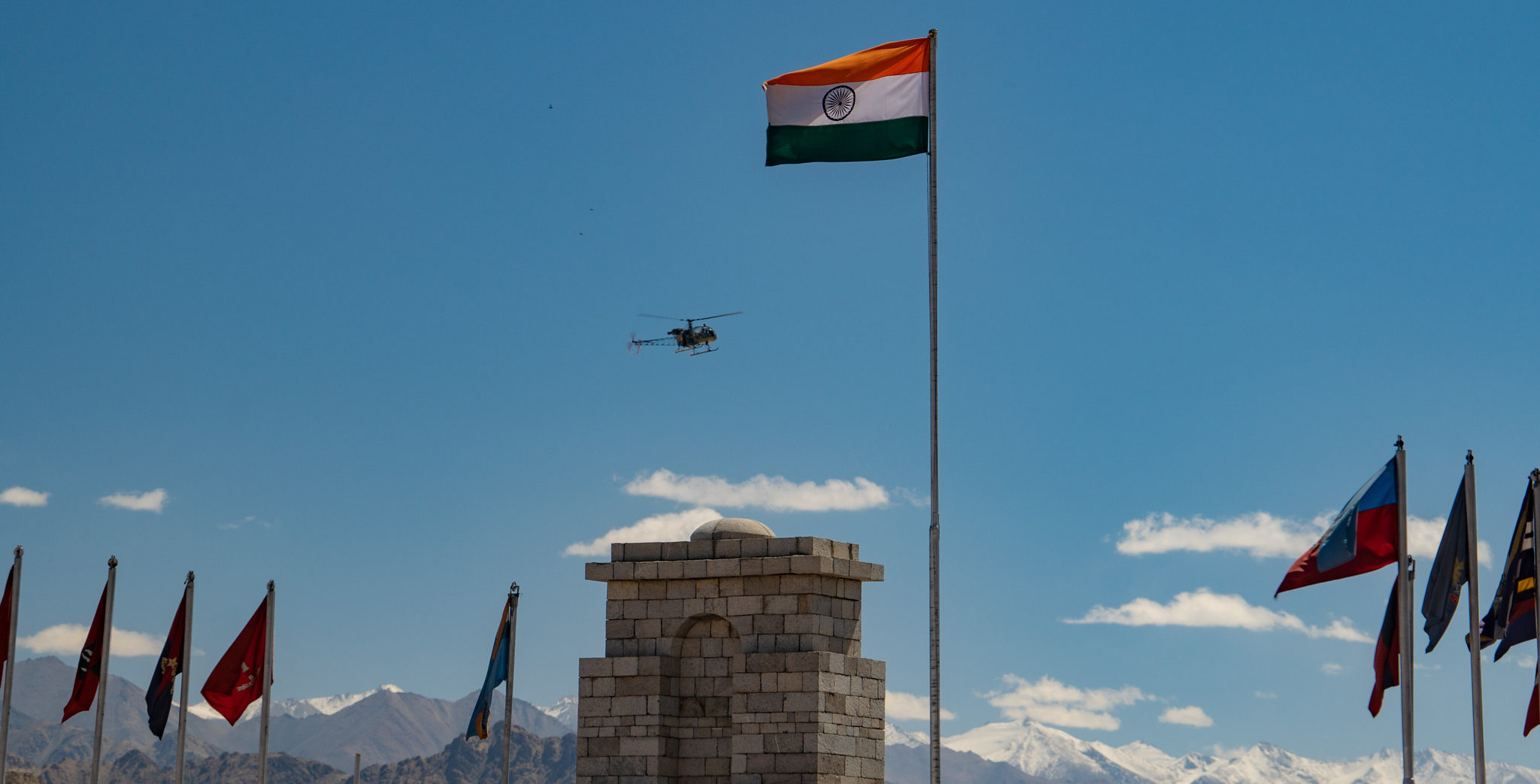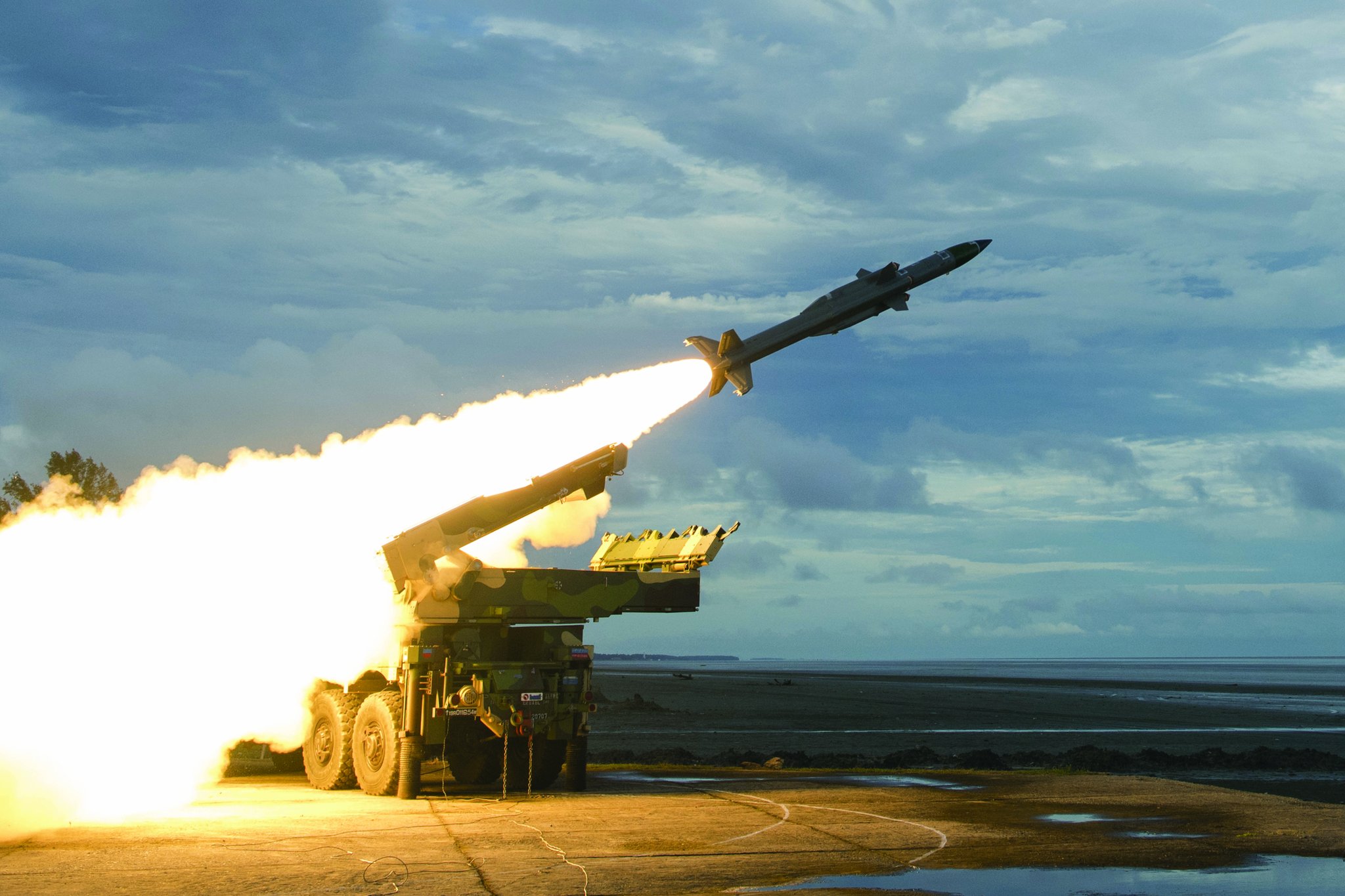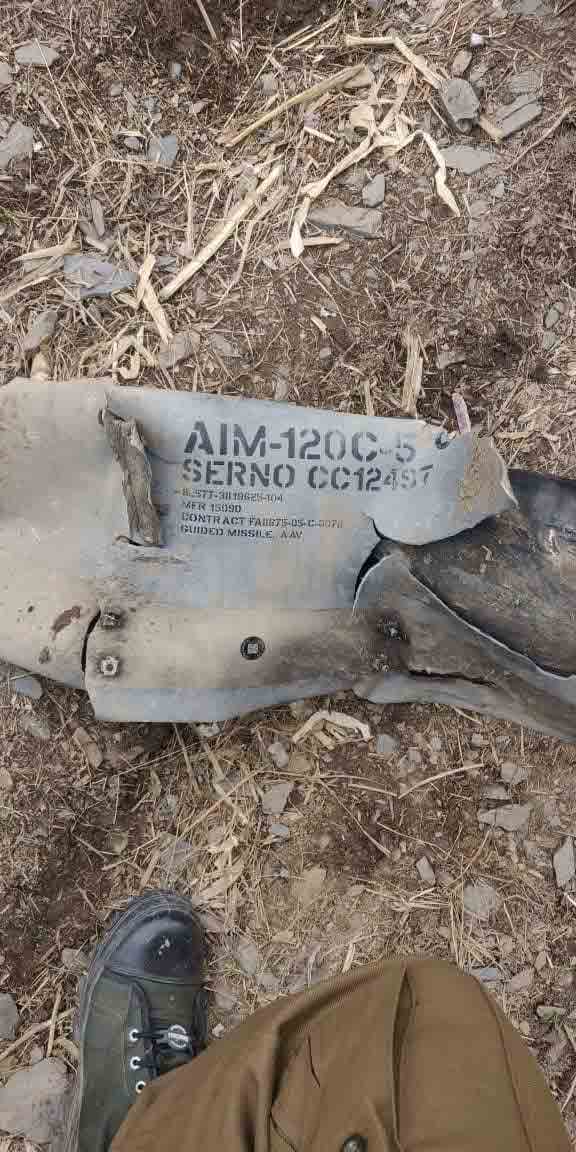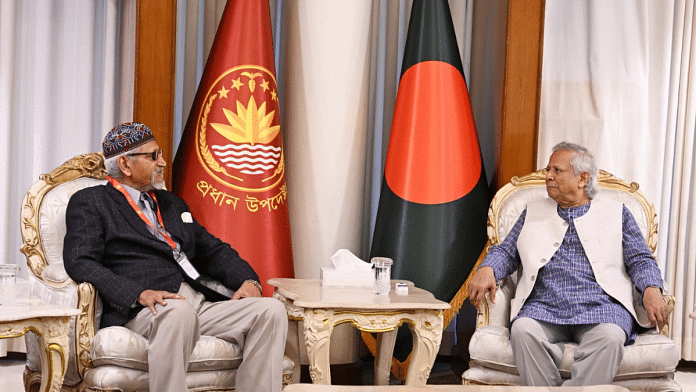SOURCE: RAUNAK KUNDE / NEWS BEAT / IDRW.ORG

In a pivotal development for India’s aerospace ambitions, a senior official from the Gas Turbine Research Establishment (GTRE), speaking exclusively to idrw.org, has confirmed that India will seek 100% Intellectual Property Rights (IPR) and Transfer of Technology (ToT) for the engine intended to power the Advanced Medium Combat Aircraft (AMCA).
This stringent requirement underscores India’s determination to achieve self-reliance in critical defense technologies, particularly in aero-engine development—a domain where the country has historically lagged. Meanwhile, DRDO Chief Dr. Samir V. Kamat has revealed that GTRE is pursuing a 6th-generation jet engine co-development for the AMCA program, with Rolls-Royce emerging as the frontrunner by offering full IPR, a deal sweetener that competitors Safran and General Electric (GE) have struggled to match.
Continue readingSOURCE: RAUNAK KUNDE / NEWS BEAT / IDRW.ORG

India’s Defence Research and Development Organisation (DRDO) is advancing its aerial combat capabilities with the Astra MkII, a beyond-visual-range (BVR) air-to-air missile designed to enhance the Indian Air Force’s (IAF) operational edge. With a projected range of 140–160 km, the Astra MkII incorporates cutting-edge technologies, including a dual-pulse rocket motor, upgraded guidance algorithms, and an indigenous radio frequency (RF) seeker. The missile is slated to achieve operational readiness by 2026, with the IAF already placing orders for limited series production (LSP) units, marking a significant step toward self-reliance in defense technology.
The Astra MkII builds on the success of its predecessor, the Astra MkI, which is already integrated with the IAF’s Sukhoi Su-30MKI and HAL Tejas aircraft. While the MkI has a range of up to 110 km, the MkII extends this to 140–160 km, depending on launch altitude, placing it in the same league as advanced global BVR missiles like the AIM-120D AMRAAM and PL-15E. This extended range is achieved through a dual-pulse solid rocket motor, which enhances endgame performance by providing additional thrust in the terminal phase, improving maneuverability and kill probability against agile targets.
Continue readingSOURCE: RAUNAK KUNDE / NEWS BEAT / IDRW.ORG

In a bold move to deepen its footprint in the Indian defence market, Brazilian aerospace giant Embraer has announced plans to establish a final assembly line for its C-390 Millennium tactical transport aircraft in India, contingent on winning the Indian Air Force’s (IAF) Medium Transport Aircraft (MTA) tender.
This ambitious proposal not only aims to meet India’s requirement for 60-80 jets but also positions India as a potential export, maintenance, and training hub for the Asia-Pacific region. If successful, the IAF would emerge as the largest operator of the C-390 Millennium worldwide, surpassing the combined orders from existing customers, including the Brazilian Air Force.
Continue readingSOURCE: AFI

Saif Automations Services LLP, a pioneering robotics and automation startup based in Visakhapatnam, has made significant strides in maritime safety by supplying over 200 remote-controlled life buoys to the Indian Navy. These innovative, battery-powered, self-propelled devices, co-engineered with India’s Ministry of Defence, have already been credited with saving 10 lives in real-world rescue operations, marking a transformative step in water rescue technology.
The remote-controlled life buoy, developed under the Innovations for Defence Excellence (iDEX) challenge for Unmanned Surface Vehicles, is designed to perform swift and safe rescues in challenging aquatic environments, including seas, lakes, and rivers. Weighing just 12 kilograms, the buoy is lightweight, portable, and equipped with a high-powered battery that supports up to 90 minutes of operation at moderate load and eight hours of GPS tracking. With a top speed of 7 knots (approximately 14 meters per second), it outpaces human swimmers, reaching distressed individuals faster than traditional rescue methods. Its robust 3-kilometer radio communication range, independent of internet or tower signals, ensures reliability even during adverse conditions like cyclones or network disruptions.
Continue readingSOURCE: AFI
In the wake of the April 22, 2025, terror attack in Pahalgam, Jammu and Kashmir, which claimed 26 lives, Bharat Karnad, Senior Fellow in National Security Studies at the Centre for Policy Research, New Delhi, has proposed bold and decisive military objectives for India’s retaliation against Pakistan. In a blog post published on April 30, 2025, Karnad argues that capturing the Haji Pir Salient and Skardu, both strategically critical locations in Pakistan-occupied Kashmir (PoK), is “eminently doable” and should be the Indian military’s primary goals to deliver a lasting blow to Pakistan’s asymmetric warfare tactics.
Karnad’s proposal comes amid heightened India-Pakistan tensions following the Pahalgam attack, attributed to The Resistance Front (TRF), a proxy of Pakistan-based Lashkar-e-Taiba (LeT). India has already suspended the Indus Waters Treaty, closed its airspace to Pakistani aircraft, and revoked visas for Pakistani nationals, signaling a shift from strategic restraint. However, Karnad criticizes the Indian government’s initial response, including Prime Minister Narendra Modi’s efforts to seek international support, which failed to secure even a mention of “Pahalgam” in a UN Security Council resolution. He urges India to act unilaterally, emphasizing that “India does not need anybody’s permission or support to retaliate harshly against Pakistan for its asymmetric terrorist warfare undermining national security.”
Continue readingSOURCE: AFI

In the wake of the April 2025 Pahalgam terror attack, which killed 26 civilians in Jammu and Kashmir, some Pakistani commentators, including veteran journalist Najam Sethi, have revived claims labeling India’s past terror incidents, such as the 2016 Pathankot airbase attack, as “false flag” operations orchestrated by India to malign Pakistan. Sethi’s assertions, echoed in a recent interview flagged by X user @DrAyeshaRay on April 28, 2025, align with a broader Pakistani narrative dismissing cross-border terrorism links.
However, these claims are directly contradicted by credible evidence, including investigative reporting by Pakistani journalist Ahmad Noorani, who confirmed in January 2016 that the Pathankot attackers infiltrated from Pakistan, a fact acknowledged by Pakistan’s civilian intelligence and even the Inter-Services Intelligence (ISI). This article debunks Sethi’s false flag narrative, leveraging Noorani’s reporting, official investigations, and strategic context to affirm the Pathankot attack’s Pakistani origins.
Continue readingSOURCE: AFI

Abhijit Iyer-Mitra, a noted defense analyst, has sparked a critical discussion on India’s strategic approach to potential military strikes against Pakistan. In a recent post on X (@Iyervval ), Iyer-Mitra outlined India’s historical weaknesses in escalation management, the need for public humiliation to deter Pakistan, and the risks of inter-service rivalry complicating operations. With speculation of imminent Indian strikes, his analysis highlights the delicate balance India must strike to achieve its objectives while minimizing the risk of spiraling conflict. This article delves into Iyer-Mitra’s arguments, their implications, and the broader strategic context of India-Pakistan tensions as of April 26, 2025.
Iyer-Mitra identifies India’s primary strategic weakness as its inability to accurately predict escalation dynamics and define clear de-escalation pathways. “India’s great weakness, historically, has been escalation prognostications (how will they respond) & de-escalation pathways (essentially what war termination would entail),” he writes. This refers to India’s challenges in anticipating Pakistan’s response to military actions and planning how to end a conflict without uncontrolled escalation.
Continue readingSOURCE: IDRW.ORG

In a significant push toward self-reliance in defense manufacturing, the Ministry of Defence (MoD) has issued a Request for Proposal (RFP) to procure 48 launchers, 48 night vision sights, 85 missiles, and one missile test station for the Very Short Range Air Defence System (New Generation) [VSHORADS-NG] under the “Buy (Indian)” category. This acquisition, aimed at enhancing the Indian Army’s air defense capabilities, underscores India’s commitment to the Atmanirbhar Bharat initiative, prioritizing indigenously designed, developed, and manufactured systems.
The VSHORADS-NG, developed by the Defence Research and Development Organisation (DRDO) in collaboration with Indian industry partners like Adani Defence & Aerospace and ICOMM Tele Limited, is a fourth-generation MANPADS designed to neutralize drones, helicopters, and low-flying aircraft. The system, an evolution of the DRDO’s VSHORADS tested successfully in 2022-2024, features advanced infrared (IR) homing, miniaturized reaction control systems, and integrated avionics, offering a range of 250 meters to 6 kilometers and a speed of Mach 1.5. Its portability—either shoulder-launched or tripod-mounted—ensures flexibility for troops in diverse terrains, from high-altitude borders to coastal regions.
Continue readingSOURCE: IDRW.ORG

In a significant step towards bolstering India’s self-reliance in defense technology, the Defence Research and Development Organisation (DRDO) has handed over Transfer of Technology (ToT) agreements for two advanced communication systems. The L/S Band Digital Troposcatter Communication System technology was transferred to Bharat Electronics Limited (BEL), while the Compact Troposcatter Communication System technology was provided to HFCL Limited (HFCL). This move, announced on April 29, 2025, underscores DRDO’s commitment to fostering indigenous manufacturing capabilities through public-private partnerships.
Troposcatter communication systems are critical for long-range, beyond-line-of-sight communication, often used in military operations where traditional line-of-sight systems like satellite or microwave links are unavailable or impractical. The L/S Band Digital Troposcatter Communication System, now in BEL’s hands, leverages the L and S frequency bands to enable robust, high-capacity data transmission over long distances, even in challenging terrains. BEL, a leading defense electronics company, is well-positioned to integrate this technology into its production lines, enhancing the Indian armed forces’ communication infrastructure.
Continue readingSOURCE: AFI

As tensions simmer along the India-Pakistan border, India is placing significant trust in its indigenous Akash Air Defence System to counter a range of aerial threats, including Pakistani military jets, Turkish-made Bayraktar TB2 drones, and Chinese Unmanned Combat Aerial Vehicles (UCAVs) like the CH-4 and Wing Loong II. With Pakistan bolstering its arsenal through acquisitions from Turkey and China, the Akash system’s versatility and proven capabilities make it a cornerstone of India’s air defence strategy.
As of 2016, Bharat Dynamics Limited (BDL) was producing 50–60 Akash missiles per month, a rate that has likely scaled up to meet growing domestic and export demands. Here’s a deep dive into how the Akash system is poised to neutralize Pakistan’s aerial threats and why it remains a game-changer in the region.
Continue readingSOURCE: AFI

The Pakistan Air Force (PAF) may be compelled to phase out its stockpile of 500 AIM-120C-5 Advanced Medium-Range Air-to-Air Missiles (AMRAAMs) by the end of 2028, as the missiles approach the end of their operational service life. Acquired in 2010 under a $650 million F-16 ammunition contract signed in early 2006, these missiles, with an estimated unit cost of $1.3 million, have been a cornerstone of the PAF’s air-to-air combat capabilities. However, the aging propulsion systems and stringent maintenance requirements may force their retirement unless extended through costly service life extension programs (SLEPs).
The AIM-120C-5, manufactured by Raytheon (now RTX), is an all-weather, beyond-visual-range missile powered by a solid-fuel rocket motor enhanced under the AMRAAM Propulsion Enhancement Program (PEP). This upgraded motor, housed in the WPU-16/B propulsion unit, offers improved range and performance over earlier variants, with an operational range of approximately 105-120 kilometers. The PEP motor is designed to withstand operating and storage temperatures ranging from -65°F to +145°F, but its baseline service life is rated at 10 years from manufacture, which for the PAF’s missiles would have expired around 2020, given their production in the late 2000s.
Continue readingSOURCE: AFI
Several major European airlines, including Lufthansa, Air France, British Airways, and SWISS, have begun voluntarily avoiding Pakistani airspace due to escalating tensions between India and Pakistan, following Pakistan’s closure of its airspace to Indian carriers. This development, reported by The Times of India, is causing significant disruptions to international flight routes, increasing operational costs, and extending travel times for passengers.
The decision by European carriers comes in the wake of Pakistan’s airspace restrictions, effective from April 24, 2025, which barred Indian-registered aircraft, charter operators, and private jets from overflying its territory. The move was part of Pakistan’s retaliatory measures after India accused Pakistani nationals of involvement in the April 22 Pahalgam terror attack, which killed 26 Hindu tourists in Jammu and Kashmir. India responded by closing its airspace to all Pakistani-registered aircraft, including military planes, from April 30 to May 23, 2025, further intensifying the aviation standoff.
Continue readingSOURCE: AFI

The Bangladesh government has swiftly distanced itself from inflammatory remarks by Major General (Retd) ALM Fazlur Rahman, a former head of the Bangladesh Rifles (now Border Guard Bangladesh), who suggested that Bangladesh should occupy India’s seven northeastern states in the event of an Indian military retaliation against Pakistan following the April 22, 2025, Pahalgam terror attack that killed 26 people. The statement, posted on Rahman’s personal Facebook account on April 30, 2025, also proposed discussions with China for a joint military arrangement, escalating regional tensions already strained by the India-Pakistan standoff.
Rahman, currently the chairperson of the National Independent Commission investigating the 2009 Bangladesh Rifles mutiny, wrote in Bengali, “If India attacks Pakistan, Bangladesh should occupy the seven states of Northeastern India. In this regard, I think it is necessary to start a discussion on a joint military system with China.” The remarks, reported by The Tribune India, sparked immediate backlash in India, prompting Bangladesh’s Ministry of Foreign Affairs to issue a clarification on May 2, 2025, stating that Rahman’s views “do not reflect the position or policies of the government of Bangladesh” and that the government “neither endorses nor supports such rhetoric in any form or manner.”
Continue readingSOURCE: AFI

Prime Minister Narendra Modi laid the foundation stone for the Navdurga Missile Test Range in Nagayalanka, Andhra Pradesh, on May 2, 2025, marking a significant step in strengthening India’s defense infrastructure. Valued at ?1,460 crore (approximately $170 million), this state-of-the-art facility, developed by the Defence Research and Development Organisation (DRDO), is poised to enhance India’s capabilities in testing advanced tactical missile systems, including surface-to-air and anti-tank missiles. The project, part of a broader ?58,000 crore development initiative unveiled during the Prime Minister’s visit to Amaravati, underscores India’s commitment to self-reliance in defense technology under the “Make in India” initiative.
Located in Gullalamoda village, Nagayalanka mandal, Krishna district, the missile test range will span over 300 acres near the coastal town of Machilipatnam, leveraging the region’s strategic geography at the confluence of the Krishna River and the Bay of Bengal. The facility will feature a launch control center, multiple launch pads, indigenous radars, telemetry, and electro-optical tracking systems, enabling comprehensive testing of both short- and long-range missile missions. Its coastal location offers a vast, unobstructed range for live-fire trials, with minimal risk to populated areas, making it ideal for simulating real-world combat scenarios.
Continue readingSOURCE: RAUNAK KUNDE / NEWS BEAT / IDRW.ORG

A recent post on X by @FighterPiloting has sparked excitement among aviation enthusiasts, showcasing what appears to be the airframe fuselage of the Tejas MkII, an advanced variant of India’s indigenous Light Combat Aircraft (LCA) developed by Hindustan Aeronautics Limited (HAL). The image, taken in what looks like a manufacturing or assembly facility, provides a glimpse into the ongoing development of this next-generation fighter jet.
The image shows a partially assembled airframe, likely the fuselage section of the Tejas MkII, in a production environment. The structure is painted in a primer coat, a common practice during aircraft manufacturing to protect the frame before final assembly and painting. The fuselage appears to be in an early stage of assembly, with visible structural components and scaffolding around it, indicating that it is still under construction.
Continue reading